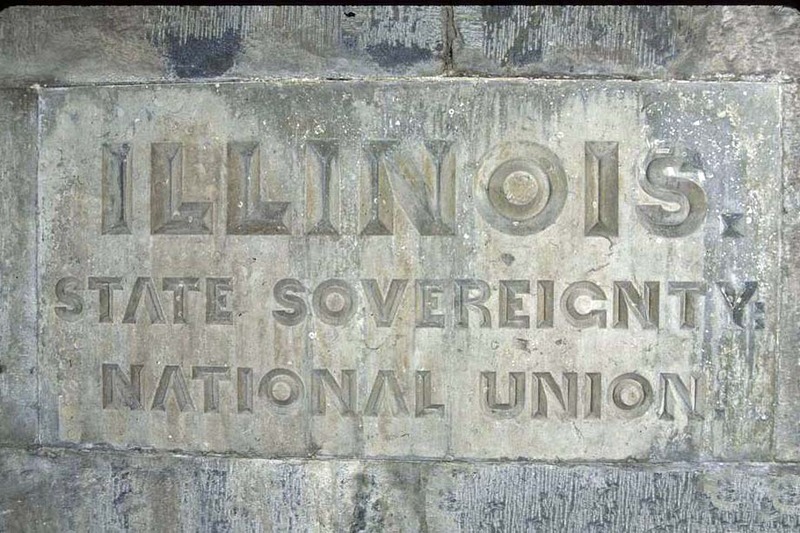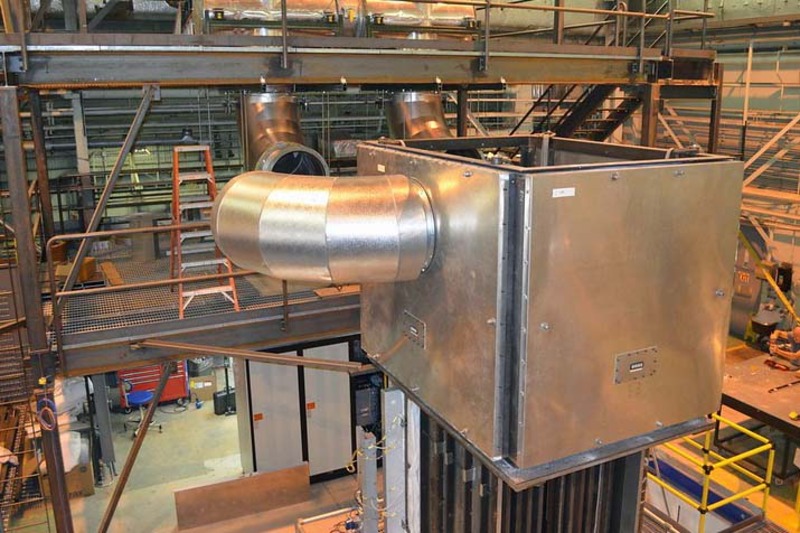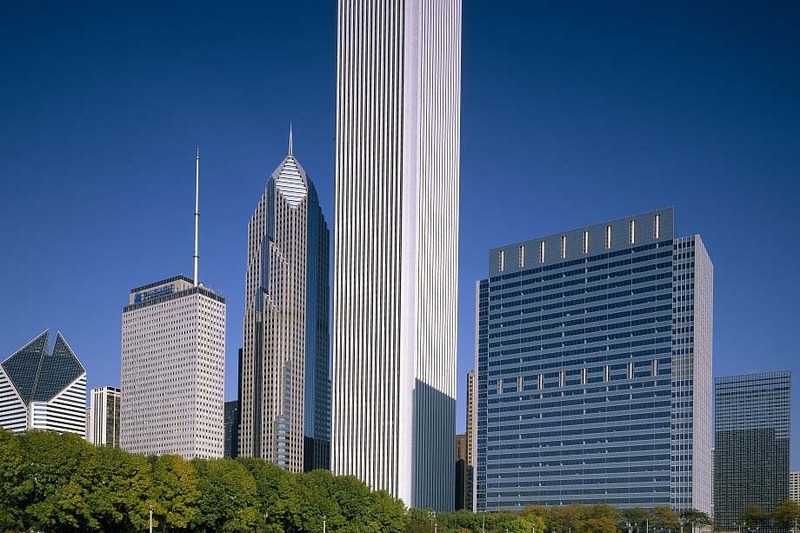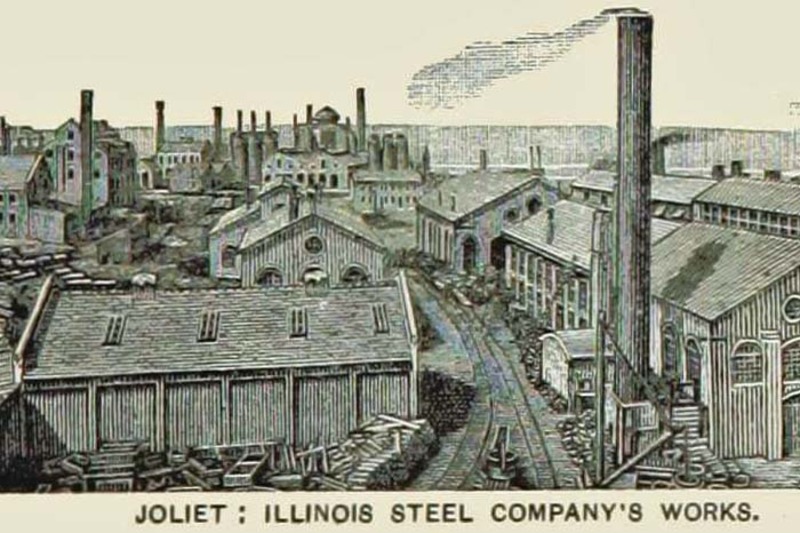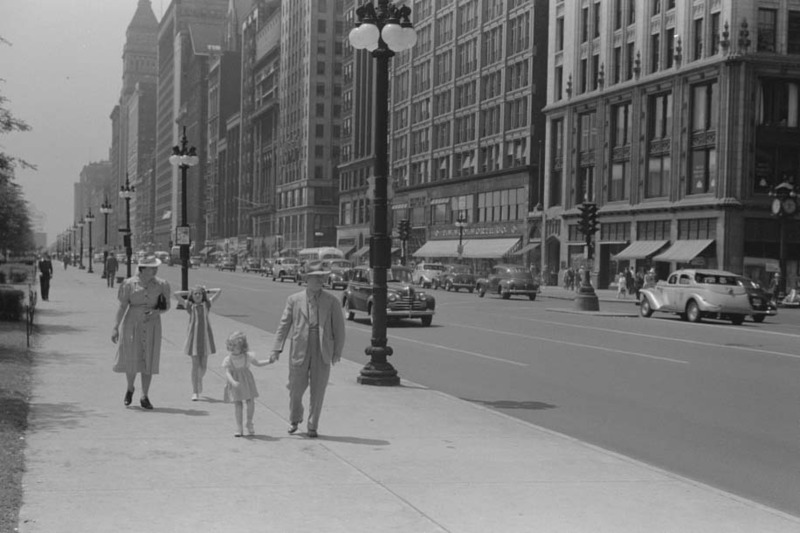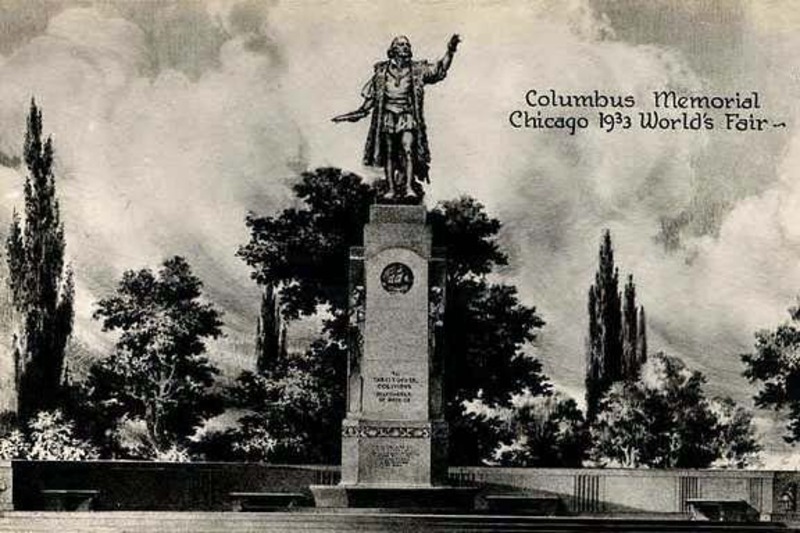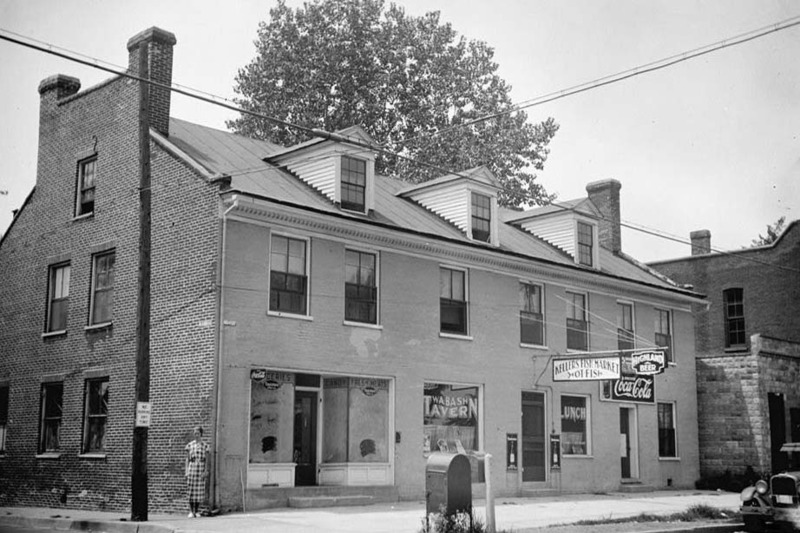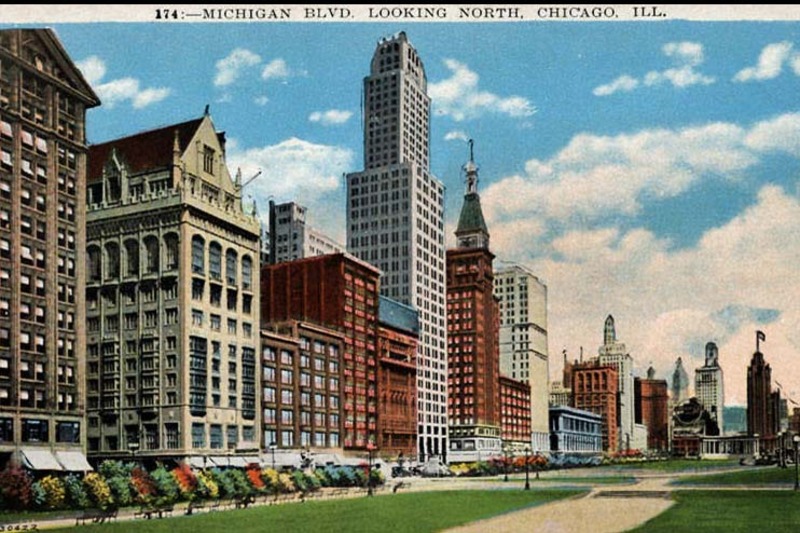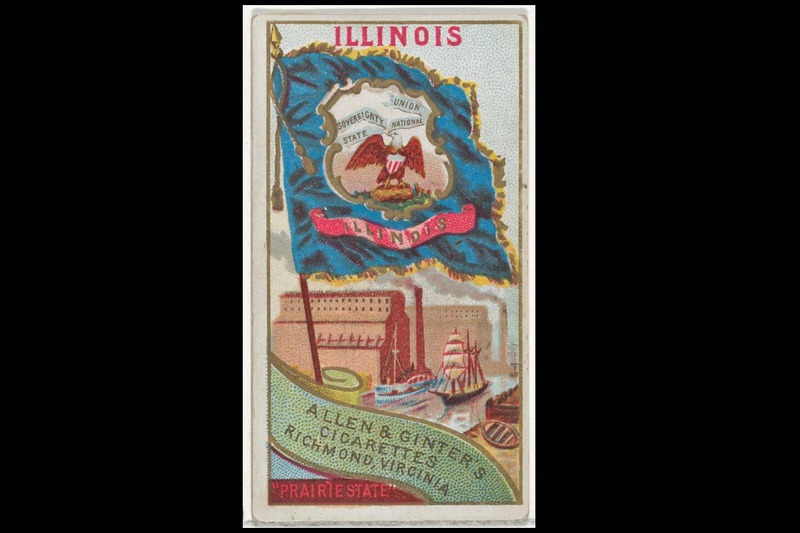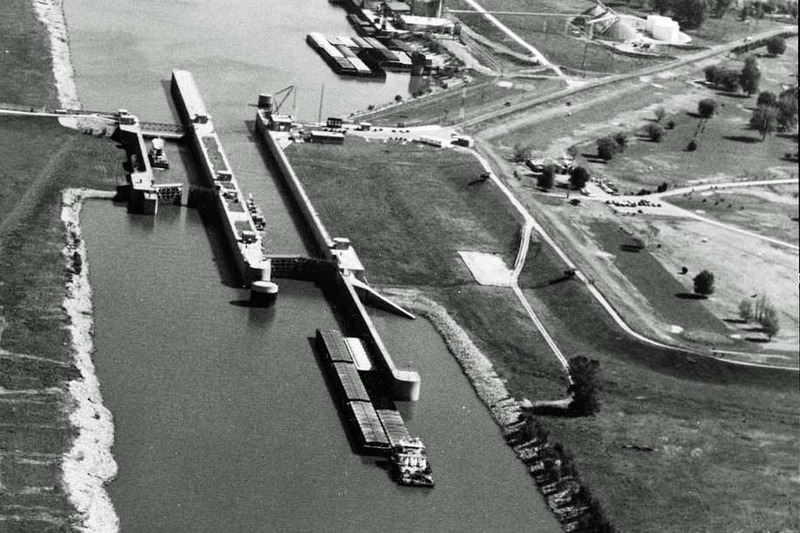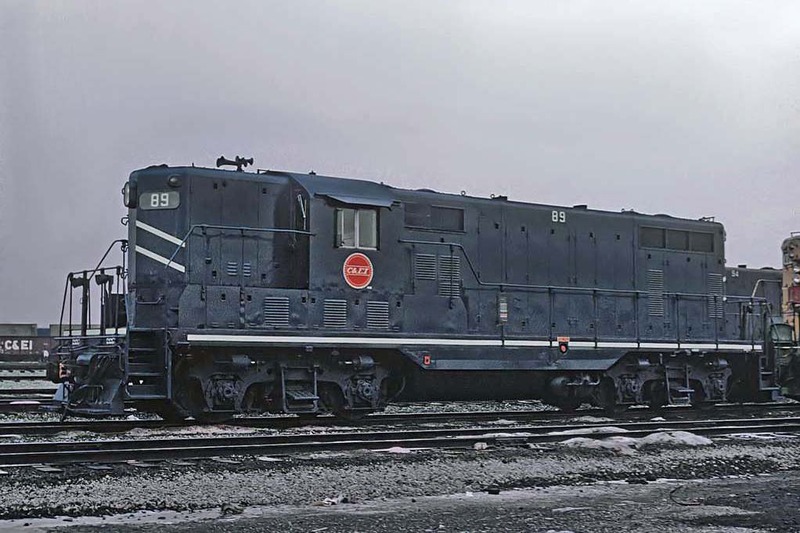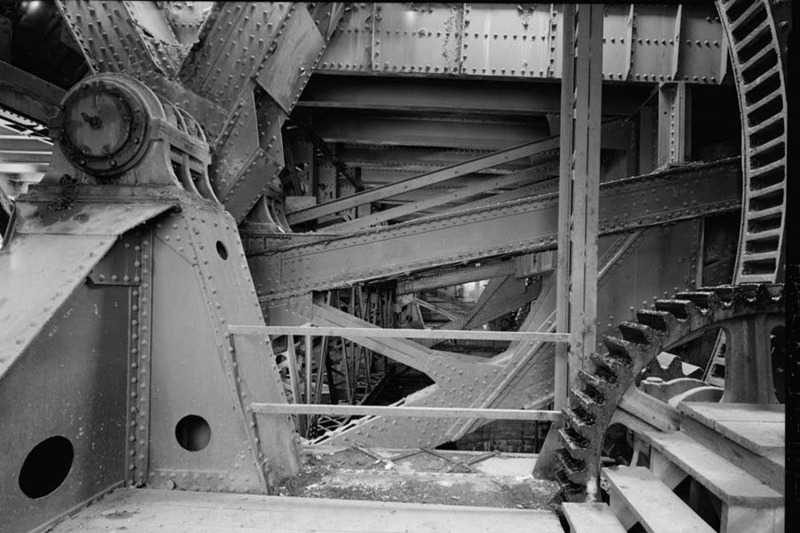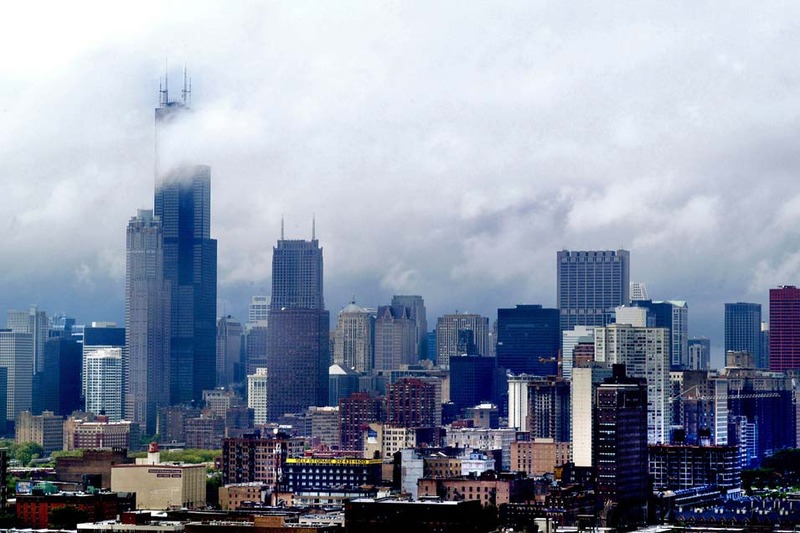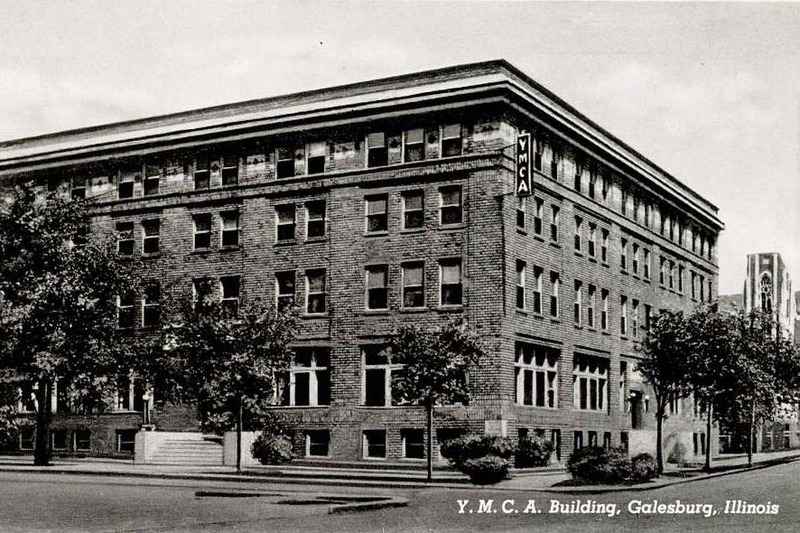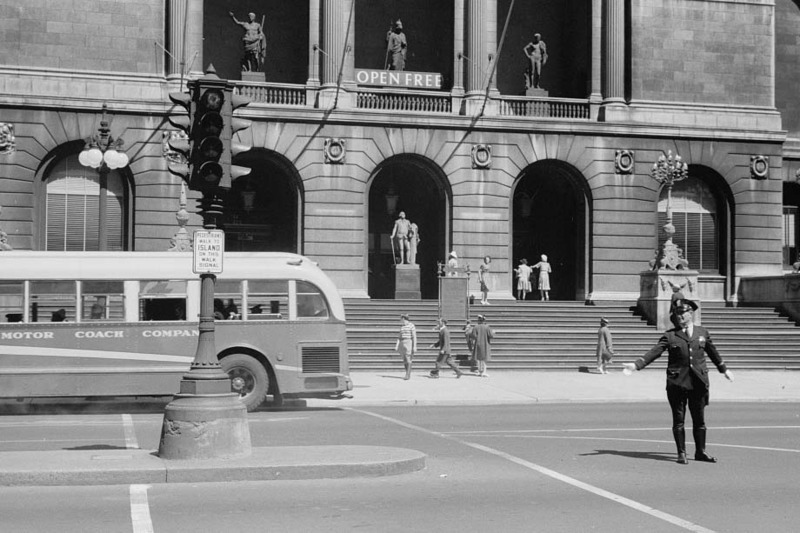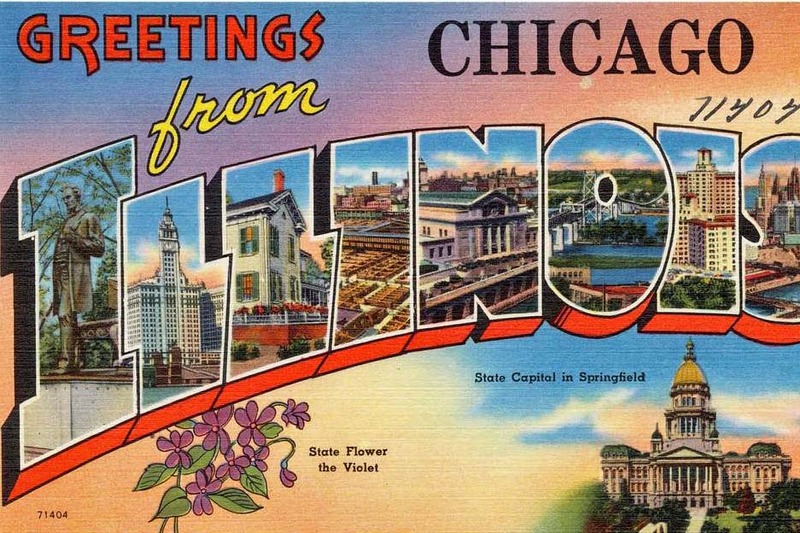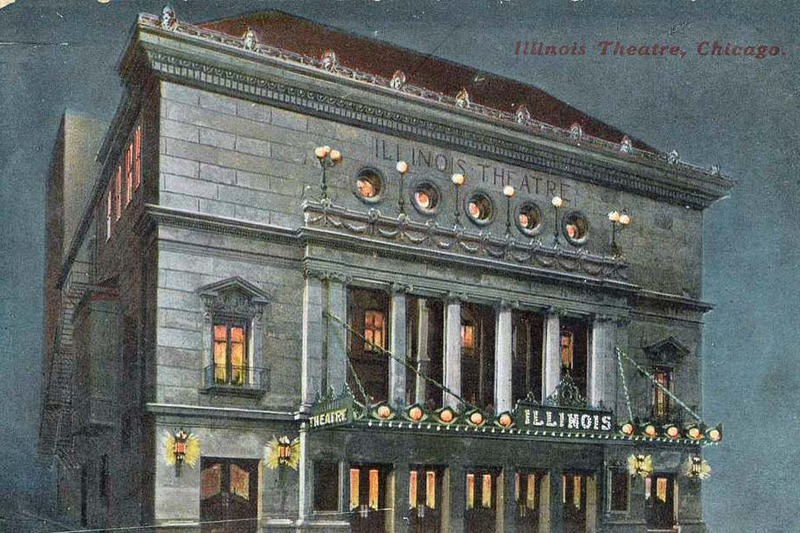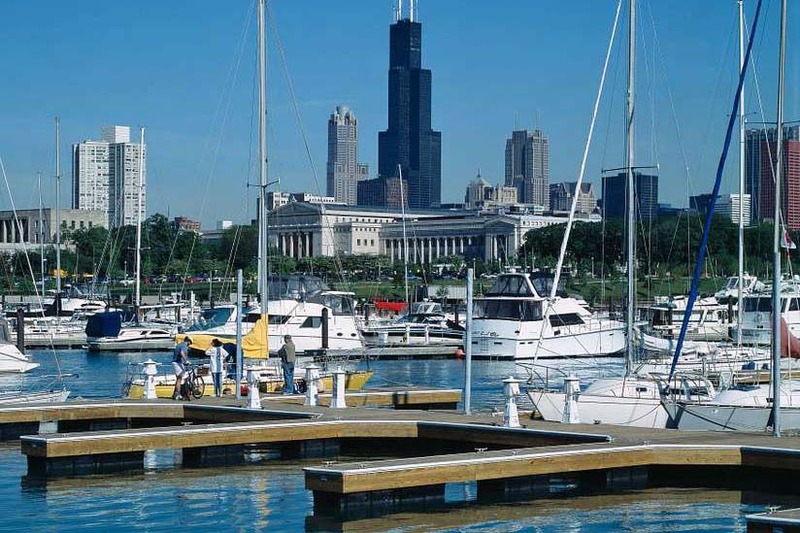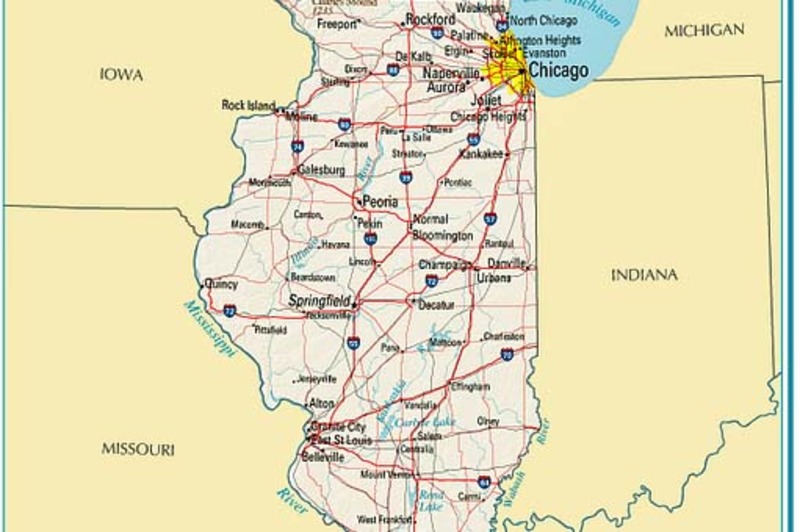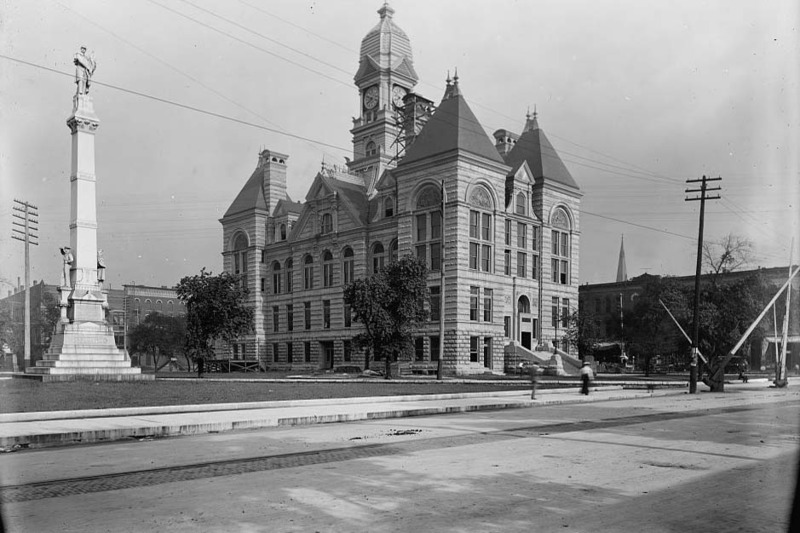EEOICPA Statistics for Claimants Living in Illinois
DOL Part B and Part E Statistics
NIOSH Dose Reconstruction Statistics
Illinois EEOICPA Facilities
Facility descriptions credit: DOE
Photo Credit: Andreas H by Pixabay
After World War II,
many companies working for the United States
Government produced UF6 feed for uranium
enrichment and diffusion plants. The Allied
Plant in Metropolis, IL was completed and
initial deliveries began sometime in 1959. In
1962, several feed plants were shut down and the
privately-owned Allied Chemical Company Plant in
Metropolis, IL, took over the conversion of U3O8
to UF6. This plant produced approximately five
thousand tons of uranium hexafluoride feed for
the Paducah Gaseous Diffusion Plant per year. It
was shut down in 1964. Though it later reopened,
it is not clear that any material after this
date was used in the Atomic Weapons Production
Process.
During the period of residual
contamination, as designated by the National
Institute for Occupational Safety and Health and
as noted in the dates above, employees of
subsequent owners and operators of this facility
are also covered under the Energy Employees
Occupational Illness Compensation Program Act.
In 1960, American Machine and Metals demonstrated a process for National Lead of Ohio (Fernald) that involved dehydration of green salt using a centrifuge process.
Argonne is one of
the U.S. Department of Energy's largest research
centers. It is also the nation's first national
laboratory, chartered in 1946. The Laboratory
specializes in reactor engineering, reactor
physics, chemistry and metallurgy. Early reactor
research focused on the production of plutonium
from uranium.
Argonne is a direct descendant
of the University of Chicago's Metallurgical
Laboratory, part of the World War II Manhattan
Project to build the atomic bomb before the
Nazis did. It was at the Met Lab where, on
December 2, 1942, Enrico Fermi and his band of
about 50 colleagues created the world's first
controlled nuclear chain reaction in a squash
court at the University of Chicago.
The
premises covered under this listing include all
those which are part of the Argonne National
Laboratory (ANL) campus in Argonne, Illinois and
those in which operations associated with the
former Met Lab were performed under contract to
the Atomic Energy Commission (AEC) once Met Lab
operations were administratively incorporated
into ANL.
Throughout the course of its
operations, the potential for beryllium exposure
existed at this site, due to beryllium use,
residual contamination, and decontamination
activities.
Records indicate that Armour Research Foundation may have tested radioactive materials for National Lead Company of Ohio (Fernald), specifically test quantities of materials other than metal (UF4 or ThO2).
Blockson
Chemical Company operated a plant which produced
uranium from phosphoric acid. The AEC contracted
with Blockson for the recovery of the uranium,
which was ultimately used in weapons production.
The AEC Uranium production work performed by
Blockson was conducted in a one-story brick
structure known as Building 55.
This listing
is also intended to cover the AEC-funded
laboratory, pilot plant and oxidation process,
which also occurred at Blockson, and was related
to the work in Building 55.
During the period
of residual contamination, as designated by the
National Institute for Occupational Safety and
Health and as noted in the dates above,
employees of subsequent owners and operators of
this facility are also covered under the Energy
Employees Occupational Illness Compensation
Program Act.
For a six month period in 1944, C-B Tool Products Company had a subcontract with the University of Chicago to provide personnel, facilities, and equipment to produce special machining of parts for special equipment, tools, jigs, and fixtures to the Met Lab from materials provided by the University of Chicago. It is unclear whether the company handled radioactive materials.
Crane Co. supplied the Atomic Energy Commission with uranium and thorium in the 1940s (and perhaps in the 1950s) and likely used materials containing uranium in manufacturing valves for the AEC. At the completion of one project in 1949, 1000 pounds of contaminated wastes, including 346 grams of uranium, were shipped from Crane to Oak Ridge. In 1949, Crane also shipped 265 kg of normal uranium to Hanford. In 1954, records indicate government interest in purchasing more uranium and thorium from Crane, but this work has not been verified.
The Dow facility in
Madison, Illinois, supplied the AEC with
Magnesium-thorium sheets and plates, non
radioactive equipment, metal products and other
services. Dow received a purchase order from
Mallinckrodt in March 1960, for research and
development on the extrusion of uranium metal
and rod. The Department of Energy also has
invoices from 1957 and 1958 indicating that the
Mallinckrodt Chemical Company Uranium division
purchased magnesium-thorium plates and sheets
from the Dow Chemical Company in Madison
Illinois.
Dow sold this facility in 1969 to
Consolidated Aluminum, which continued to
operate the facility from 1969 through 1986.
However, during the period of 1969-1986, the
operations were of a purely commercial nature
and did not involve AEC or Department of Energy
contracts. Spectrulite subsequently purchased
the plant from Consolidated Aluminum.
Although this site was designated as part of the
Formerly Utilized Site Remediation Action
Program (FUSRAP) in 1992, no remediation work
ever took place under the DOE FUSRAP program
prior to that program being transferred to the
Army Corps of Engineers in 1997.
During the
period of residual contamination, as designated
by the National Institute for Occupational
Safety and Health and as noted in the dates
above, employees of subsequent owners and
operators of this facility are also covered
under the Energy Employees Occupational Illness
Compensation Program Act.
From February 1944 through June 1944, ERA Tool and Engineering Company contracted with the University of Chicago to supply services and supplies to the Met Lab, specifically to provide necessary personnel, facilities, and equipment required to produce special machining of parts for special equipment, tools, jigs, fixtures, etc. from materials furnished by the University. It is unclear from the records whether ERA handled radioactive materials as part of its work.
Fansteel Metallurgical Corp. performed beryllium work for the Manhattan Engineer District under Contract No. W-7425 eng-27 for the fabrication of beryllium into sintered shapes and for the manufacture of 600 bricks for delivery to Los Alamos. Fansteel also worked with "approximately 150 pounds of nominal grade beryllium carbide powder" for use in the Nuclear Energy for the Propulsion of Aircraft (NEPA) project. This work is reported to have occurred between April and June of 1950.
The Fermi National
Accelerator Laboratory (Fermilab for short) got
its started as the National Accelerator
Laboratory, which marks the year that the first
employees were hired. Its name was formally
changed to the Fermi National Accelerator
Laboratory in 1972. Fermilab has one of the most
powerful particle accelerators in the world and
is used to conduct a variety of high-energy
physics programs.
Throughout the course of
its operations, the potential for beryllium
exposure existed at this site, due to beryllium
use, residual contamination, and decontamination
activities.
From October 1952
through 1966, General Steel Castings/Industries
performed quality control work for the AEC.
Specifically, it x-rayed uranium ingots and
betatron slices to detect metallurgical flaws
for Mallinckrodt Chemical Company. This work was
performed in a facility located at 1417 State
Street, which was part of what was later known
as the "South Plant" of Granite City Steel. This
listing is intended to cover only the South
Plant, identified by the State Street address,
and not any other facility that may have been
owned by Granite City Steel prior to or after
its purchase of the General Steel Industries
facility in the early 1970s. For example, this
listing does not cover Granite City Steel
facilities on Madison or 20th Street.
During
the period of residual contamination, as
designated by the National Institute for
Occupational Safety and Health and as noted in
the dates above, employees of subsequent owners
and operators of this facility are also covered
under the Energy Employees Occupational Illness
Compensation Program Act.
In 1952, the Great Lakes Carbon Corp. studied graphite for the Atomic Energy Commission and in 1958 it did some Transient Reactor Test Facility (TREAT) fuel work for Argonne National Laboratory (ANL). As part of the contract, ANL agreed to decontaminate the facility used. It handled radioactive uranium and radioactive thorium under AEC contract.
The 39th Street
Warehouse was occupied by the Metallurgical
Laboratory and Argonne National Laboratory until
approximately 1949. Activities in the building
included the storage of radioactive materials.
International Register was involved in the development of uranium machining techniques for the Metallurgical Lab and the Manhattan Project. Records indicate that a test of centerless grinding equipment took place at International Register in February 1943. Uranium rods (1" in diameter and 6" long) were ground with the accuracy of about .001" for the Met Lab.
Records indicate that Armour Research Foundation may have tested radioactive materials for National Lead Company of Ohio (Fernald), specifically test quantities of materials other than metal (UF4 or ThO2).
Lindsay Light and
Chemical was a commercial processor of monazite
sands, which yield several commercially valuable
products, including the radioactive metal
thorium. The Manhattan Engineer District and
then the Atomic Energy Commission purchased
thorium from Lindsay; AEC contractors purchased
a variety of products from this firm as well.
Documents indicate that the firm supplied
thorium to the MED and AEC through at least
1953. The facility received a source material
license from the AEC in 1956, and it continued
to process radioactive materials for commercial
purposes until 1973.
During the period of
residual contamination, as designated by the
National Institute for Occupational Safety and
Health and as noted in the dates above,
employees of subsequent owners and operators of
this facility are also covered under the Energy
Employees Occupational Illness Compensation
Program Act.
The University of
Chicago's Metallurgical Laboratory (Met Lab) was
involved in early uranium metallurgical work as
part of the Manhattan Project. The first
self-sustaining nuclear chain reaction was
achieved at the university in a "pile" called
the Chicago Pile 1, built by Enrico Fermi and
his Met Lab colleagues. The Met Lab is the
direct predecessor of Argonne National
Laboratory into which all Met Lab functions were
transferred in 1946.
Beryllium use at the
Metallurgical Laboratory is linked with
experimental studies in determining whether to
use graphite, heavy water or beryllium as a pile
moderator. Graphite was the ultimate choice for
Fermi's pile.
*In 1982-1984 and 1987
environmental remediation was conducted in
Eckhart Hall, Jones Laboratory and Ryeson Hall.
Only environmental remediation work performed
under contract to the DOE performed in these
buildings as DOE facility employment during the
time period.
A November 7, 1944, document indicates that Midwest Manufacturing worked on the "self-lubricating draw die" which was related to metal fabrication for the Manhattan Project.
Portions of the East Pavilion of the Museum of Science and Industry were used by employees of the Metallurgical Laboratory and the Argonne National Laboratory. Although the facility was primarily used as office space, it is believed that radioactive materials were handled at this facility and that a spill of radioactive material may have taken place near the service elevator on the ground floor.
In the 1940s, the
Manhattan Project leased the National Guard
Armory from the State of Illinois for uranium
processing and radioactive material storage. In
1951, the site was returned to the State of
Illinois.
Although this site was designated
as part of the Formerly Utilized Site
Remediation Action Program (FUSRAP) in 1985, the
only year in which remediation work took place
was 1987.
During the period of residual
contamination, as designated by the National
Institute for Occupational Safety and Health and
as noted in the dates above, employees of
subsequent owners and operators of this facility
are also covered under the Energy Employees
Occupational Illness Compensation Program Act.
In 1957, National Lead Company of Ohio (Fernald) used equipment at the Podbeilniac Corp. to conduct an extraction experiment using uranium in solution. NLO later traveled to the site to oversee the decontamination of equipment used in the experiment.
Precision Extrusion was involved in several projects for the Atomic Energy Commission and Argonne National Laboratory. From 1949 to 1950, it extruded experimental fuel channel tubes from aluminum and aluminum-lithium alloys. During 1956 through 1959, Precision Extrusion performed several uranium extrusion projects on a small-scale basis.
In 1944, Quality Hardware had a contract to support the University of Chicago. The company canned experimental unbonded uranium slugs for Hanford and may have canned all of the slugs used in the Hanford production reactors during World War II.
In 1944, R. Krasburg entered into a subcontract with the University of Chicago for services and supplies for the Metallurgical Laboratory. The subcontract required Krasburg to provide necessary personnel, facilities and equipment to produce special machining of parts for special equipment, tools, jigs, fixtures, etc., from materials furnished by the University. It is unclear from the documentation whether Krasburg handled any radioactive materials as part of its work.
In 1953, Argonne National Laboratory suggested that Sciaky Brothers be used to perform a stitch welding operation for a uranium cord, zirconium clad specimen EBR irradiation. The documentation does not indicate whether this work actually took place. The company may also have done electron beam melting or welding of uranium metal on an experimental basis.
Swenson Evaporator was scheduled to perform a raffinate spray drying test for National Lead Company of Ohio (NLO) on March 20, 1951. This test would have involved some radioactive residue. The drums containing the raffinate were shipped to Swenson by Mallinckrodt, but it is believed that they were not opened and the test not performed.
The W.E. Pratt
Manufacturing Company performed metal
fabrication tasks (machining and grinding) for
the University of Chicago Metallurgical
Laboratory beginning in the spring of 1943. The
purpose of the machining done by Pratt was to
speed up delivery of pieces for the experimental
pile and to learn all that could be learned
about handing uranium metal in turret lathes and
automatic screw machines. In 1944, Pratt was
subcontracted by the University of Chicago to
finish “short metal rods” by centerless
grinding. This work continued until June 30,
1946. The Manhattan Engineer District History
indicates that DuPont placed an order with Pratt
to turn and grind unbonded Hanford slugs.
During the period of residual contamination, as
designated by the National Institute for
Occupational Safety and Health and as noted in
the dates above, employees of subsequent owners
and operators of this facility are also covered
under the Energy Employees Occupational Illness
Compensation Program Act.
In 1943, the Metallurgical Laboratory conducted experiments of centerless grinding equipment on uranium. Wyckoff Drawn Steel surfaced two tubes and one rod, but their process was deemed to be too expensive and too slow to be used in production.

